Stellar Demise
© NASA/JPL-Caltech
Stars, the brilliant beacons of our night sky, live remarkable lives defined by complex nuclear fusion processes. However, like all living entities, stars have lifespans and eventually face death. The process of the death of a star is determined by its initial mass, leading to a variety of spectacular and sometimes violent ends.
When massive stars reach the end of their lifecycle, their demise is marked by intense violence. Due to their substantial mass, these stars require accelerated fusion reactions to counteract the force of gravity. In contrast, medium-sized stars face a particularly grim fate. Falling between the extremes of quietly fading away and triggering a supernova explosion, these stars transform into eerie entities before undergoing a dramatic inversion of their structure.
THE LIFECYCLE OF A STAR
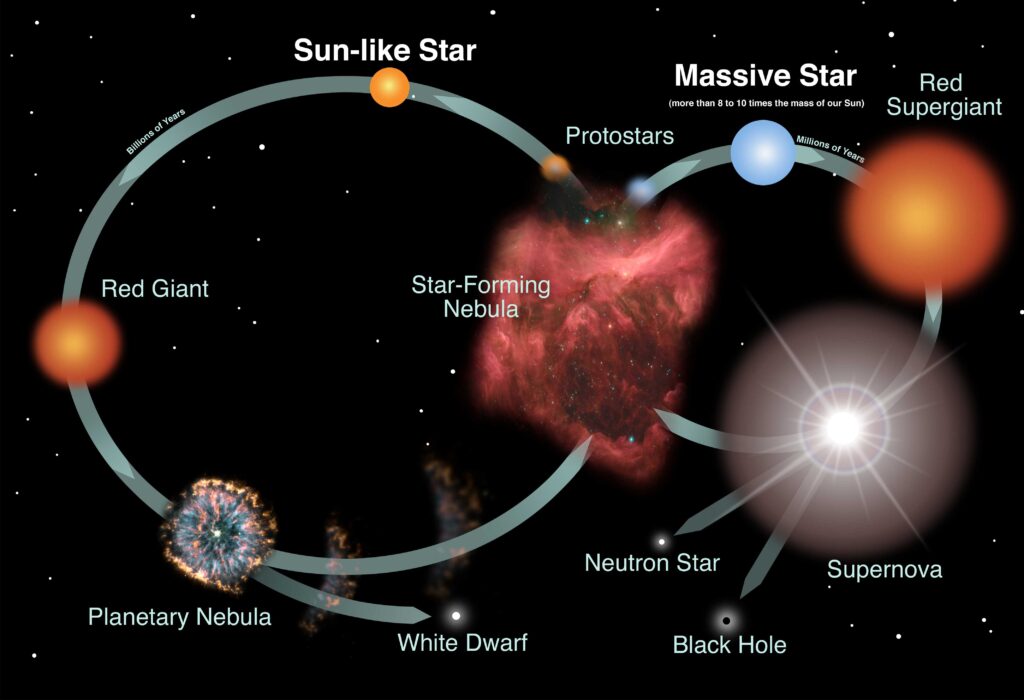
The lifecycle of a star is a fascinating journey that begins with the birth of a star from vast clouds of hydrogen gas and interstellar dust. Stars are formed when these gas and dust clouds collapse under their gravitational pull, leading to the birth of a protostar. As the protostar continues to attract more material, its temperature rises until nuclear fusion begins, marking the birth of a star. This fusion process releases energy that balances the inward force of gravity, allowing the star to shine brightly in what is known as the main sequence stage.
Over time, stars go through various stages depending on their mass. Low-mass stars, like the Sun, eventually expand and cool to become red giants. During this phase, they undergo fusion processes that lead to the formation of heavier elements like carbon. Subsequently, low-mass stars shed their outer layers to form planetary nebulae and eventually evolve into white dwarf stars.
On the other hand, massive stars have a more energetic and violent end. When these massive stars run out of fuel, they undergo a supernova explosion, scattering materials into space. The remnants of a supernova can form neutron stars or even black holes, depending on the mass of the original star.
THE DEATH OF LOW-MASS STAR
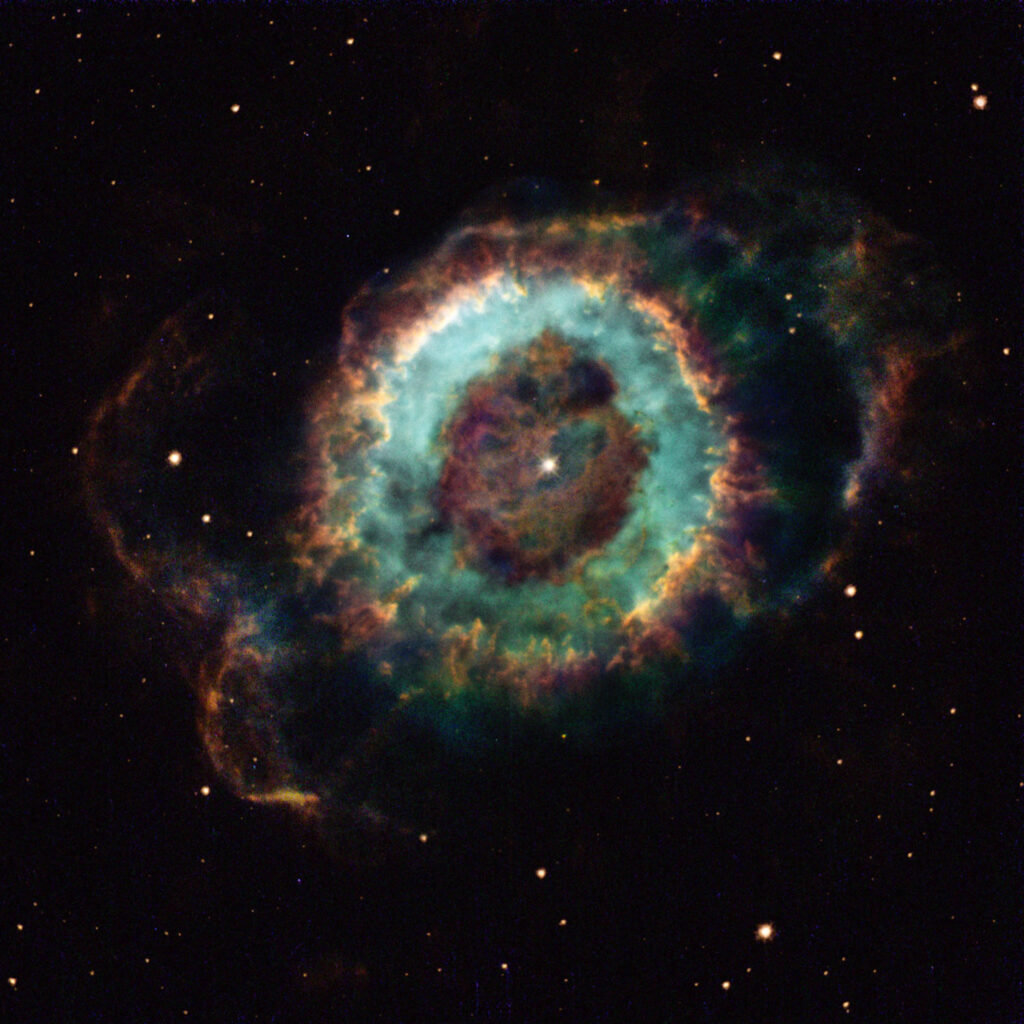
The death of a low-mass star, like our Sun, is a gradual process that takes place over billions of years.
Learn about Sun’s lifecycle here.
MAIN-SEQUENCE
Low-mass stars, defined as those with masses less than about 2 times the mass of the Sun, spend the majority of their lives on the main sequence, fusing hydrogen into helium in their cores. The star’s mass determines its main sequence lifetime, with lower-mass stars living longer. For example, a 0.4 solar mass red dwarf can live for 56 billion years on the main sequence, while the Sun’s main sequence lifetime is about 10 billion years.
RED GIANT
When the hydrogen in the core is exhausted, the core contracts and heats up, causing the outer layers to expand greatly, turning the star into a red giant. A hydrogen-burning shell forms around the inert helium core, and the star’s luminosity increases significantly. The red giant phase lasts for a few hundred million years, with the star’s radius increasing by a factor of 100 or more.
HELIUM FLASH AND HORIZONTAL BRANCH
As the red giant’s core continues to contract, it eventually reaches a temperature high enough for helium fusion to begin. This rapid onset of helium fusion, known as the helium flash, causes the core to expand, reducing the temperature and energy output. The star then settles onto the horizontal branch, fusing helium with carbon and oxygen in the core.
ASYMPTOTIC GIANT BRANCH
After exhausting helium in the core, the star once again becomes a red giant, with a helium-burning shell and a hydrogen-burning shell surrounding an inert carbon-oxygen core. This asymptotic giant branch phase is relatively short-lived, lasting only a few million years.
PLANETARY NEBULA
During the asymptotic giant branch, the star’s outer layers are ejected into space, forming a planetary nebula. The hot, exposed core, now a white dwarf, emits ultraviolet radiation that ionizes the ejected gas, causing it to glow. Planetary nebulae often have intricate shapes due to the interaction between the fast stellar wind and the previously ejected material.
WHITE DWARF
The remaining core, now a white dwarf, is supported by the pressure of degenerate electrons and has a mass less than 1.4 times the mass of the Sun (the Chandrasekhar limit). White dwarfs are incredibly dense, with a typical density of about 1 million times that of water. As the white dwarf cools over billions of years, it becomes a black dwarf, an extremely faint, cold stellar remnant.
THE DEATH OF INTERMEDIATE-MASS STAR
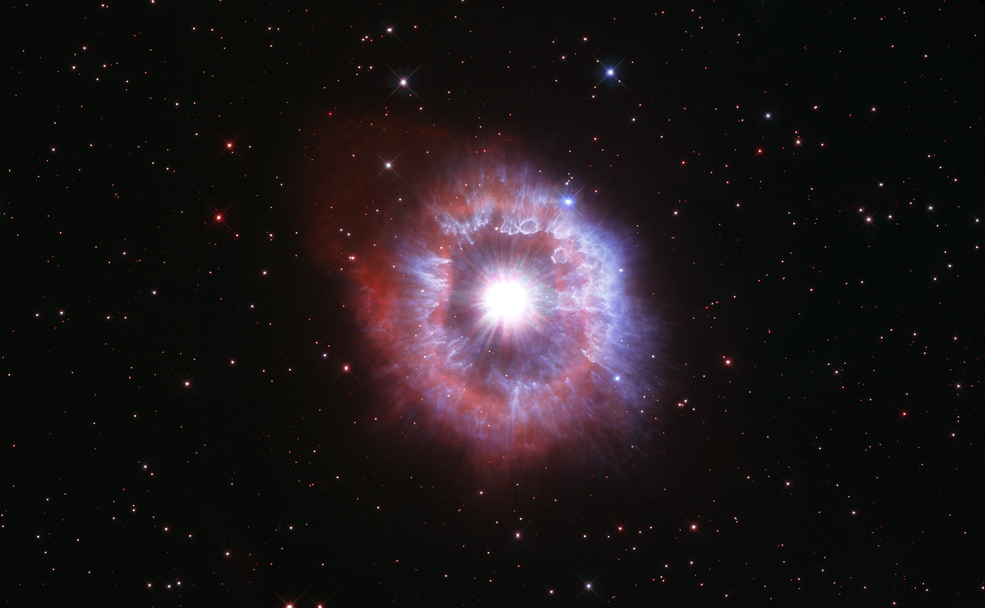
The death of an intermediate-mass star, typically with masses between about 2 to 8 times the mass of the Sun, follows a fascinating evolutionary path that differs from both low-mass and high-mass stars. Here is a detailed overview of the key stages in the death of an intermediate-mass star:
MAIN SEQUENCE AND RED GIANT PHASE
Intermediate-mass stars evolve through core hydrogen and helium burning, similar to low-mass stars, spending a significant portion of their lives on the main sequence. As they exhaust their core hydrogen, these stars expand into red giants, experiencing copious mass loss due to the intense stellar winds generated during this phase.
HELIUM BURNING AND ASYMPTOTIC GIANT BRANCH
Following the red giant phase, intermediate-mass stars progress to helium burning in their cores, leading to the formation of a helium-burning shell around an inert carbon-oxygen core. The stars then enter the asymptotic giant branch, a phase characterized by the fusion of helium into carbon and oxygen in the core, marking the last nuclear burning phase for these stars.
PLANETARY NEBULA AND WHITE DWARF FORMATION
During the asymptotic giant branch phase, intermediate-mass stars shed their outer layers, forming a planetary nebula as the ejected material interacts with the stellar wind. The remaining core of the star, now a white dwarf, is composed mainly of carbon and oxygen, supported by degenerate electrons and with a mass less than the Chandrasekhar limit.
POST-WHITE DWARF EVOLUTION
White dwarfs from intermediate-mass stars cool over billions of years, eventually becoming black dwarfs, extremely faint stellar remnants mainly composed of carbon and oxygen. The process of white dwarf cooling and transformation into a black dwarf marks the final stage in the evolution of intermediate-mass stars, with these remnants contributing to the chemical enrichment of galaxies.
THE DEATH OF HIGH-MASS STAR
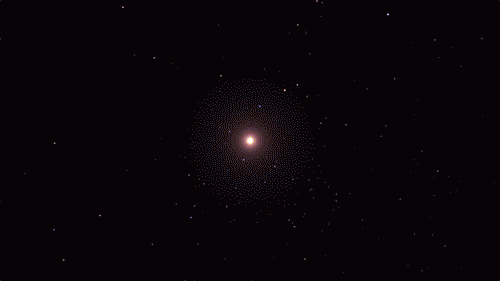
The death of a high-mass star, defined as those with masses greater than about 8 times the mass of the Sun, is a dramatic and violent process that plays a crucial role in the chemical evolution of galaxies. Here is a detailed overview of the key stages:
MAIN SEQUENCE AND RED SUPERGIANT
High-mass stars spend a relatively short time, only a few million years, fusing hydrogen into helium in their cores while on the main sequence. After exhausting hydrogen in the core, the star expands into a red supergiant, with a radius up to 1000 times that of the Sun. During this red supergiant phase, the star begins fusing helium to carbon in the core, while also initiating a shell of hydrogen fusion around the core.
ADVANCED BURNING STAGES
As the red supergiant evolves, its core contracts and heats up, allowing it to fuse carbon to neon, neon to oxygen, oxygen to silicon, and finally silicon to iron. These advanced burning stages occur in concentric shells around the core, with the star becoming increasingly unstable as it progresses.
IRON CORE COLLAPSE AND SUPERNOVA
When the core is composed primarily of iron, no further fusion can take place, as iron fusion requires energy input rather than releasing energy. The iron core collapses under its gravity until nuclear forces halt the collapse, causing the core to rebound. The rebound creates a shockwave that travels outward through the star’s outer layers, triggering a supernova explosion that can briefly outshine an entire galaxy.
NEUTRON STAR AND BLACK HOLE FORMATION
Depending on the star’s initial mass, the core left behind after the supernova can either be a neutron star or a black hole. Stars with initial masses between about 8 and 20 solar masses typically leave behind a neutron star, a city-sized object with a density greater than that of an atomic nucleus. Stars with initial masses greater than about 20 solar masses are likely to collapse directly into a black hole, an object with such strong gravity that not even light can escape.
STELLAR REMNANTS
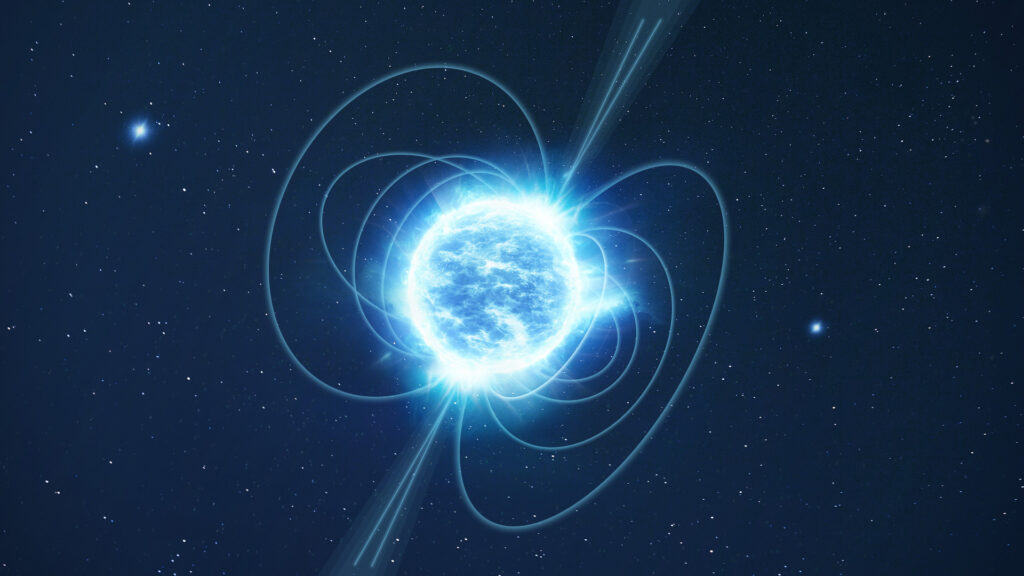
After a star dies, its remnants can take one of several forms depending on the star’s mass:
- White dwarfs are the remnants left after the death of a star similar to the Sun (less than about 4 solar masses). The core contracts into a very dense ball about the size of Earth, supported by electron degeneracy pressure.
- Planetary nebulae are formed from the outer envelope of a red giant star. When the core runs out of hydrogen, it contracts and heats up, causing the outer layers to expand and eventually be ejected, forming a colorful planetary nebula.
- Neutron stars are formed when a massive star (8-20 solar masses) runs out of fuel and its core collapses. The core becomes so dense that protons and electrons merge to form neutrons, resulting in an extremely dense object about 10 km across.
- Supernova remnants are the expanding shells of gas and dust blasted into space by the explosion of a massive star. The shockwave can trigger the formation of new stars by compressing interstellar gas and dust. (Learn about Supernova)
- Black holes form from the collapse of extremely massive stars (greater than 20-25 solar masses). The core collapses to a single point with infinite density, creating an infinitely strong gravitational field from which nothing, not even light, can escape. (Learn about Black Holes)
PLANETARY NEBULAE
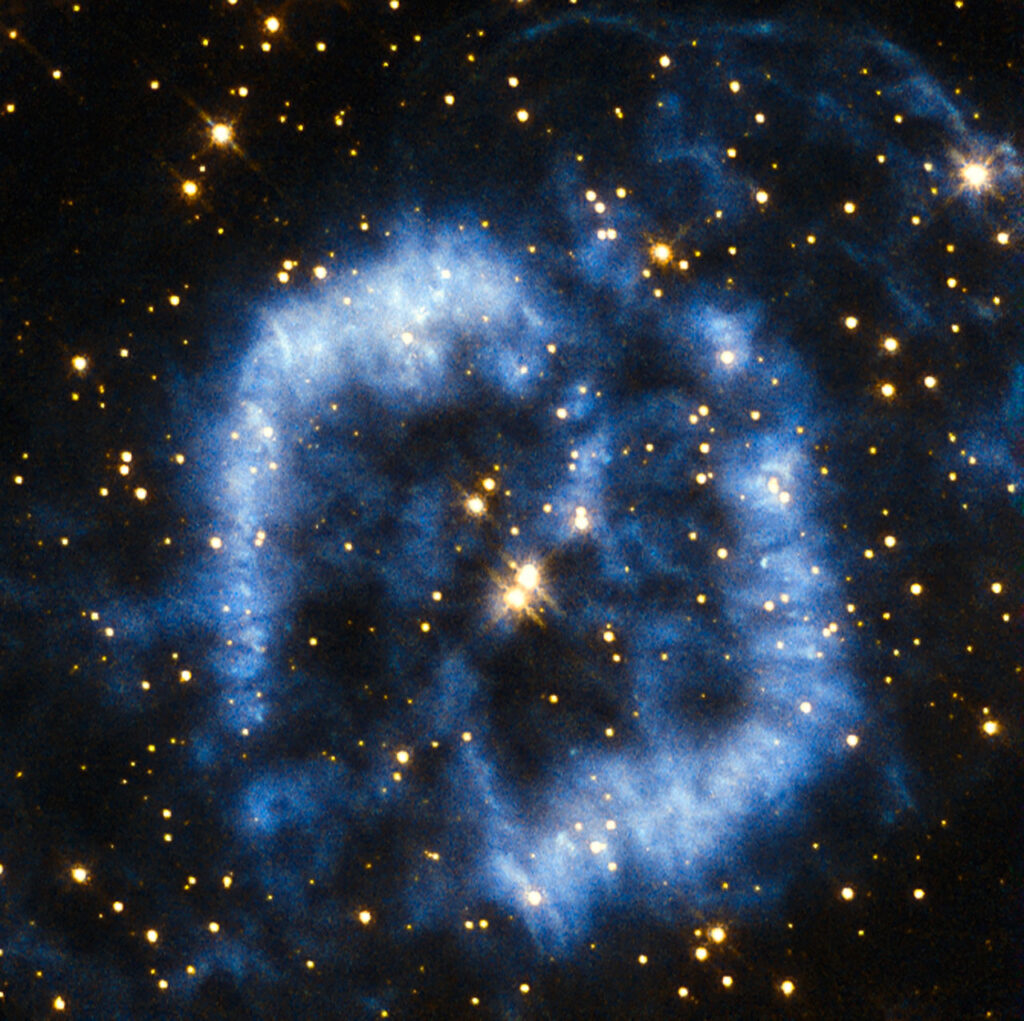
Planetary nebulae are formed during the final stages of the life cycle of low-to-medium mass stars, like our Sun. As these stars near the end of their lives, they go through a red giant phase where they expand greatly and shed their outer layers into space. The expelled gas and dust from the star form an expanding, glowing shell around the dying star’s core, which is now a very hot, dense white dwarf. The ultraviolet radiation from the white dwarf ionizes the ejected material, causing it to glow and form a colorful planetary nebula.
Planetary nebulae only last for around 20,000 years, which is a very short period compared to the billions of years a star spends in its main life cycle. They are an important part of the stellar life cycle, as they recycle the material from the star back into the interstellar medium where it can be used to form new stars and planets. While most planetary nebulae have a roughly spherical appearance, they can also take on more complex and varied shapes, likely due to factors like binary stars, stellar winds, and magnetic fields
